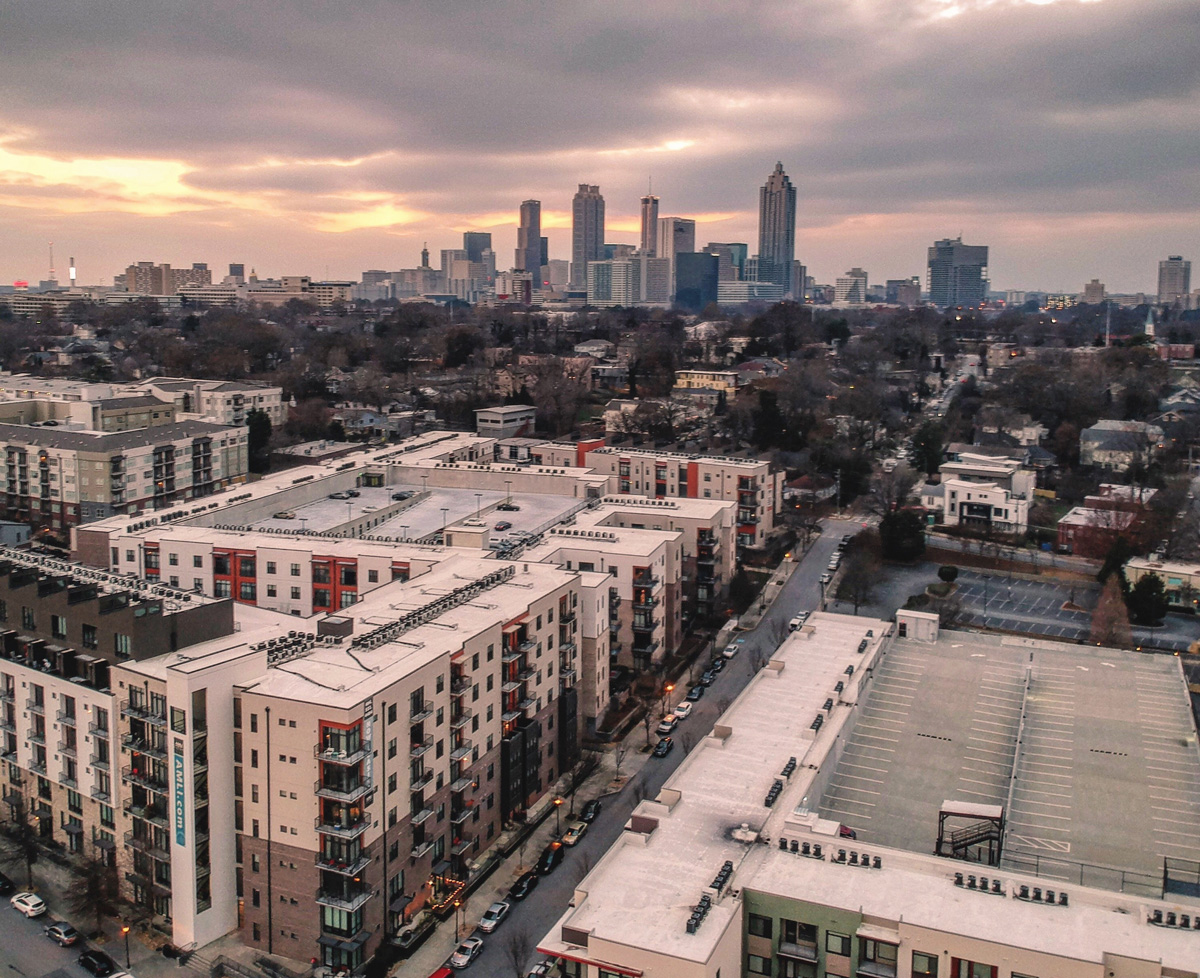
Photgraph by Dedy Saleh / EyeEm / Getty Images
The City of Atlanta has an affordable housing crisis, one that has hit lower-income families particularly hard. More than 75 percent of low-income renters in the city spend more than 30 percent of their income on rent, and a large portion pay more than half their income on rent. Atlanta ranks 5th out of 70 large US cities in the rate of eviction notices per rental homes. Housing instability and affordability problems have direct impacts on school turnover and performance, health, and employment. Stable, affordable housing is the critical platform on which healthy families and communities depend.
How hard is it to afford rent in Atlanta? From May 2013 until May 2019, median rent for a one-bedroom rental unit has increased from just over $1,100 per month to over $1,600 per month, for an increase of more than 45 percent (even after inflation, it’s 37 percent). In some neighborhoods, such as the West End and Reynoldstown, median rents have increased by more than 60 percent since 2013. Even since Mayor Keisha Lance Bottoms came into office, citywide median rent has increased by about 12 percent. Meanwhile, home values in many traditionally lower-income neighborhoods have skyrocketed, driven partly by investors and speculation, especially near the Beltline.
Bottoms campaigned on making Atlanta more affordable. Now, about 18 months into the new mayoral administration, her team has released the Housing Affordability Action Plan.
The plan does not come out of thin air. Much of it follows the more detailed House ATL Plan, which was issued in September 2018 by a coalition led by the Urban Land Institute. Earlier, during the 2017 mayoral election, City for All, a smaller coalition, released a 10-point platform, with the centerpiece being a call for $250 million in funding from the City of Atlanta. Bottoms’s campaign pledge for $500 million in “public funding” for affordable housing was made in this context.
The city’s plan has some strengths. It lays out the problem fairly well, sets an overall goal of creating or preserving 20,000 “affordable” homes, and identifies a set of 45 potential “actions.” At the same time, the plan falls far short of what Atlanta needs to address its growing housing affordability crisis.
First, and most important: the city has moved away from Bottoms’s campaign pledge that many understood as a commitment to raise $500 million in new city funding (i.e., new municipal funds, and not state or federal dollars) to address affordable housing. Now, the plan simply calls for “leveraging” $500 million in public funds, including state and federal monies. Receiving state and federal dollars is a good thing, but that funding alone won’t save the day. The city needs to find new local funding—from a bond referendum, fees, or other new sources—to subsidize units, purchase property, or provide rental assistance, and yes, help win state and federal funding. And the city should identify new funding, rather than preexisting funding, when counting progress towards any pledge.
Second, “affordable” housing is defined very broadly in the plan, and the 20,000-unit goal is not broken down by income level. Under the plan, affordable housing is defined as “affordable to households with incomes below 120 percent of Atlanta’s area median income (AMI) with an emphasis on households with incomes less than 60 percent of AMI.” That’s equivalent to roughly $96,000 and $48,000 for a family of four, respectively. There are good reasons to support affordable homeownership with down-payment assistance for lower-wealth households with incomes up to about $80,000 for a family of four, especially in gentrifying neighborhoods. But the greatest need for housing subsidy is for people and families making less than 50 percent of AMI—for example, $40,000 for a family of four. Failing to specify that a large portion of public subsidy will go to such low-income residents could mean underserving those who are seriously cost-burdened and most vulnerable to instability, eviction, and displacement. The plan should identify goals for different income groups, and specific dollar goals for each group—and scarce subsidy dollars should be focused on helping lower-income families.
A third major flaw of the plan is the vagueness of the “actions” and the process going forward. A number of the prescribed “actions” begin with the word “explore” or “pursue.” Some are as vague as “enable the private market.” Many action items suggest the possibility of additional resources, which is good, but do not specify any investment of city dollars and instead use language such as “increase the utilization of” and “expand access to.” The plan also includes no timeline for moving on the action items. This is somewhat surprising given that the plan is coming out 18 months into Bottoms’s first term and that many of these proposals have been discussed in earlier planning efforts.
Finally, there’s the question of how progress will be measured. The city needs to break out its metrics with much more precision, identifying units produced or preserved by affordability level and tenure (rental vs. ownership), and funding sources. Other expenditures such as support for eviction legal defense or short-term rental assistance should also be reported in detail. Reporting on these metrics should be posted publicly on a city website in advance of regular meetings of the city’s new Housing Commission.
The affordable housing crisis in Atlanta is in its seventh year and shows no signs of slowing. To show true leadership in the region, the city should move quickly to fix these major flaws and set measurable, detailed goals, put forth a timeline for action items, and, most of all, identify a substantial level of new city funding that will be raised to support these goals. Specifying a vehicle for raising $250 million, as first suggested by the City for All coalition, would be a good place to start.
Dan Immergluck is a professor at the Urban Studies Institute at the Andrew Young School of Policy Studies at Georgia State University, where his research concerns real estate, housing, and affordable housing. He is the author of four books and over sixty scholarly articles. He has consulted to the U.S. Department of Housing and Urban Development, the U.S. Department of Justice, and other organizations and has been cited and quoted in the New York Times, Washington Post, Wall Street Journal, and others. Follow him on Twitter @DanImmergluck.









![The North Carolina Museum of Natural Sciences’ newest exhibit is a [pre]historic first](https://cdn2.atlantamagazine.com/wp-content/uploads/sites/4/2024/04/DD-3-100x70.jpg)




